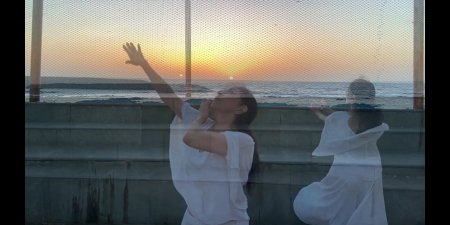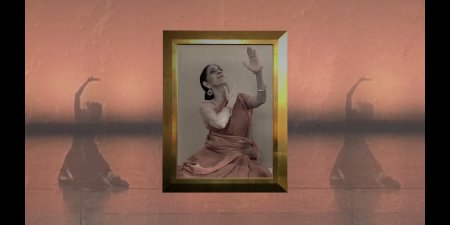
|   |

|   |
 e-mail: arshiyasethi@gmail.com A piece based on several questions about dance September 8, 2020 As the title suggests, this piece is about questions. Questions are important. Not because they get us the answers, but they get us understanding. The right question at the right time can enrich a learning experience, or embed it more permanently in memory. A question creates a needle-point of light which in a jiffy can grow into a glowing orb, even as it suggests darkness. It jabs and fingers at the mind, then burrows in like a drill. These little fragments of curiosity, that get at the marrow of important issues, resonate, throb, linger and finally open up vast spaces of understanding. The great Greek philosopher Socrates subscribed very strongly to the importance of questions in enhancing knowledge. These disciplined questions Socrates believed, would enable the examination of ideas, determine the validity of those ideas, and pursue the thought in many directions and for many purposes. The key to distinguishing Socratic questioning from questioning per se is that the former is systematic, disciplined, deep and usually focused on fundamental concepts, principles, theories, issues or problems. My first question that I wish to address is, 'How can one imagine dance'? In as many ways as possible! Yes! But only some have names and familiar associations. When unfamiliar and strange, can it definitely be called dance? What are the qualities of dance? Many people felt would question some modern choreographies as being evocative of Bibhatsa rasa. I remember exactly this word being used by the great arts scholar Harsha Dehejia to describe some contemporary art, particularly art that had scatological elements to it. In this sentence I have already seeded the issue on which I would raise the next question - What is contemporary? Is it the same as modern? Does it have something to do with when art is created, or how it is depicted? When modern or mixed, is it dance per se or dance that has been regurgitated? Does a dancer have agency to go beyond the learnt without drawing attention to self as a maverick? Is 'swa-bhav' and 'auchitya' of any significance in tradition? It is pertinent that I am asking these disruptive questions, challenging the clear cut parameters of the Guru Shishya Parampara, on 5th September, a day we recognize as Teachers' Day!  Vrinda Chadha These were some of the thoughts that struck me when I saw Vrinda Chadha perform "Imagine". A senior disciple of Odissi exponent Guru Ranjana Gauhar, Chadha danced evocatively to a rendering of John Lennon's cult song "Imagine", which hit the charts in 1971 for the first time and saw a revival when included in the 2012 Olympic Opening ceremony. How did this music serve as the base for Indian dance? What made young Vrinda chose this for her dance video? "Being in extended lockdowns meant adapting to change in the way art is presented. At least temporarily, as one didn't have access to auditoriums any more. Reluctance and scepticism towards this sudden change of showcase was a common reaction, especially since we've been so accustomed to a particular way of doing things. However, one could either brood over what is inaccessible or, instead, effectively use the limited resources within one's reach and turn the lockdown into an opportunity. I chose exploring the realms of creativity through other existing digital mediums while still being at home and expressing via videos was one such way for me," said Vrinda with her bright eyes glowing like stars. She asked herself the question, "Why not embrace the fall collectively with the rest of the world and rise together instead of hiding away our art and what we do? This approach of connecting with a larger audience via social media was almost democratic to me. Since its accessibility was widened beyond restricted auditorium halls." When old ways are challenged, as happened in the case of the global pandemic of Covid 19 where artistes were to lie defeated, or show resilience? "To me it was about being resilient and continuing to create/express ideas I have believed in, while still remaining true to the art form. The gift of time, allowing reflection over what it is that really matters in the world, encouraged me to stand together with other artistes and face this challenge". Manipulating home tools and lights to best create the effect of a performance she rose to the challenge of working with others for her video 'Imagine'. To her it was about breaking the normalised limitations of what kind of ideas can or cannot be expressed through classical dance. Does it always have to be the clichéd? How about another perspective? "Perhaps the rigid boundaries are simply a false illusion," she said thoughtfully, "which is why when I was approached to express over a song like 'Imagine', the idealist in me seized this chance." A simple yet powerful piece that was co-written in the May of 1971 by John Lennon & Yoko Ono, 'Imagine,' urged people around the world to live in unity and has since then remained important and relatable through the years. Its lyrics and music embody freedom and talk of a world without heaven and hell, without borders and wars, greed for possessions, crime, hunger, grief or dogmatic religions but instead a simpler world. A world made up of bright blue skies, peace, where all live for the moment and share its bounty through a brotherhood of man. Can one even comprehend such a world? That is the question posed to the viewers. "The song, heightened through my abhinaya, urges them to join the dreamers, saying that it's easy, if one simply tries to IMAGINE!" While 'Imagine' has been viewed by some as an anthem that challenges the right wing conservative view point for its urging of a world without religion, I think in this case it was seen as a paean to the idealism and power of the imagination! Idealism is important for Vrinda, who is pursuing a fellowship with Teach For India, working closely with children from low income families and introducing them to creative learning techniques using art in education. The focus of this video was to spread a gentle message of hope and humanity in these hard circumstances that leave us helpless. Social media allowed this message to reach a wider audience. "It was a humble attempt to spread some smiles during these uncertain times by staying in tune with what we love to do -create and perform music and dance regardless of difference in genres. What started off as just a whim became a virtual performance by 13 vocalists and myself in an Acapella rendition of 'Imagine' (Accapella is music that uses no instruments other than vocals. Voices harmonize to create the music). The project was initiated, arranged and produced by Yeashu Yuvraj. He brought to life this concept and co-created a digital collaboration with a young group of singers and one dancer, adding up to a grand total of fourteen. "Little did we know that our quarantine project would go viral and receive so much love and warmth from the people who saw and re-shared it on various platforms. Each of us recorded our parts from home and sent them to Yuvraj who put everything together. From the first moment I heard the track, its simplicity touched my heart and made the process so organic. I wanted to keep its choreography uncomplicated and honest, yet within the framework of my classical training, all the time wanting it to be a piece even a non-dancer could easily understand," says Vrinda with youthful ebullience.  From the film 'Entwined' Like this one, many of the video-ed dance pieces catalysed by the Corona tribulations, have found a lot of traction on the internet, generated much attention online and have now been followed by many dancers. I have been writing pieces about some of the dance videos that have grabbed our attention. But more fundamental questions are also being raised within the artistes' community on the internet and social media. Many of them pertain to the economic viability of the performing arts and the question of livelihoods. With no performances or teaching opportunities, it is not just the singers and dancers who are suffering but all associated artistes like accompanists, or related professionals such as costume designers, make-up artistes, lighting technicians and accompanying musicians, among others. In these conditions physical, financial and mental health is all getting into fragile territory. Changing times are calling for a changing tune. And while several Indian classical dance exponents are attempting to use the current times as their theme, while creating choreographic movements, many more are reeling in a free fall on to the fragile territory that is already under the triple impact. The government of India has not valued the arts as they should have. Maybe they had their own limitations. That is why the 'Atmanirbharta' ideal was promoted. Many of the artistes caught on to the new 'atmanirbhar' normality. Thus, in the absence, or inadequacy of support, from public, private and governmental patrons, artistes themselves have risen to fill the gap and have helped raise money to support those suffering the most. Among them I would count the effort of Manjari Chaturvedi, Anurupa Roy's Katkatha, T.M. Krishnan's trust and many more, far too many to name here. Heartening is the fact that many of the artistes have raised their voice, and hands, to help other marginalised communities. Odissi dancer and awarded dance film maker, Kadambari's work with manual scavengers, is a case in point. But in this column I would like to discuss one such example, which has taken recourse to dance films to raise money for marginalised artistes.  From the film 'Meltdown' "The lockdown has brought every performance, festival and corporate event to a grinding halt. The theatres will take a long time to open. Audiences will take a long time to return to the theatres", says globally celebrated iconic Kathak dancer Aditi Mangaldas. Recognising the crisis facing so many in the ecosphere of the arts, an unusual axis began to emerge. The axis was built around the configuration of Raw Mango, Aditi Mangaldas and Teamwork Arts, that came together to raise money for marginalised and economically vulnerable artistes during the pandemic, and I am happy to say that they raised more than they had set as their goal and far faster. That in itself is something we will discuss later. But let us start with understanding the partnership and the synergy that happened. Raw Mango is a popular just over a decade old brand of contemporary Indian hand-woven textiles crafted using traditional techniques. Known for how it draws from the colours, philosophies and cultures of India to create a unique voice through design, it seemed a good choice to tie up with Aditi Mangaldas, who is also known for the same skill worldwide, in innovating upon century old skills, in pursuit of defining a new aesthetic vocabulary, as she choreographs performance pieces. Teamwork Arts is a highly versatile production company with roots in the performing arts, social action, and the corporate world. Their #ArtMatters with the tag line of 'Preserving Cultures, Connecting Lives' is a donation platform, aimed at supporting families in rural and urban areas who depend on cultural and artistic performance for their livelihoods. Thus, with a strong synergy in their work, binding all the three partners, the initiative of drumming up financial support for the at risk artistes was most likely to succeed. And it did! On 24th August came the post that with ten days still to go this partnership met the target of INR 675000 by 105% and collected INR 709205. The identified beneficiaries included artistes from varying performing art practices including Bharatanatyam, Kathak, Folk, Traditional Martial Art Forms, Kuchipudi, Manipuri, to name a few including a few artisans and weavers. The 150 beneficiary artiste families hail from over ten Indian States (including Assam, Delhi, Kerala, Madhya Pradesh, Maharashtra, Manipur, Meghalaya, Nagaland, Rajasthan, Tamil Nadu, Uttar Pradesh and West Bengal). What is remarkable is how many large donations came in, and also many anonymous ones too, testifying to the innate "goodness in people," a belief Aditi holds on to dearly. But truly, the remarkable feature of this enterprise was that the group raising the funds offered something back. "Belonging to a small community of artists in India who are privileged, I felt compelled to offer an artistic experience rather than just make an appeal. This is a dance offering to bring you cheer and is something for you to cherish…as you may have experienced watching us live in a theatre." What they offered were a set of six short dance films, under the rubric of "Within, from Within", by Aditi Mangaldas performed by the members of the Aditi Mangaldas Dance Company - The Drishtikon Dance Foundation, that bring together the original work 'Within' and their current creative impulse, from within the confines of their homes. At this point I would like to ask the thinking reader to imagine just how many lives a work can have?  From the film 'Enframed' My reason for asking this provocative question is based on the fact that the series of dance films have emerged from a previously staged dance work called "Within". "Six stories emerge, cut and stitched from WITHIN and take you WITHIN the confines and the expanse of the WITHIN," explains Aditi playing on the title of the formerly staged dance work. "The video clips are a series of elaborate yet delicate visual offerings. A fragile thread weaving emotion and passion; instincts and sentiments; spirit and soul: past and present, all into one fabric" says Aditi as she urges you to go to see the six films - 'Entwined,' , 'Meltdown', 'Enframed', 'Wrapped', 'Unravel' and 'Empassion'.  Dr. Arshiya Sethi, trained in Kathak, has served as dance critic, commentator, institution builder for the arts, having created both tangible and intangible institutions and equities. She has been a Fulbright Arts Fellow (2003-2004) and a post doctoral Fulbright (2016-2017). Her doctoral work has been on the link between politics and dance in the case of Sattriya. She is presently working on the intersection of dance and activism / social justice through her NGO, Kri Foundation (estd. 2003), and has extended her academic work to Indian dance in the diaspora. Post your comments Please provide your name and email id when you use the Anonymous profile in the blog to post a comment. All appropriate comments posted with name & email id in the blog will also be featured in the site. |